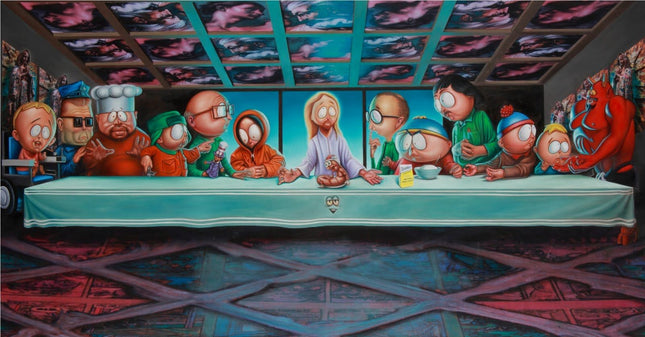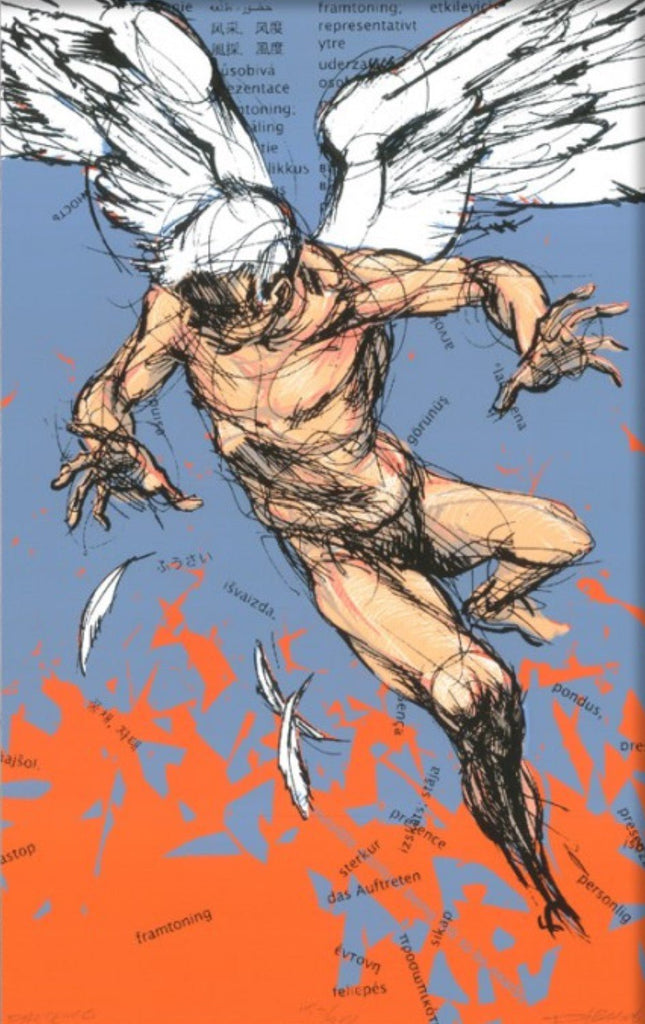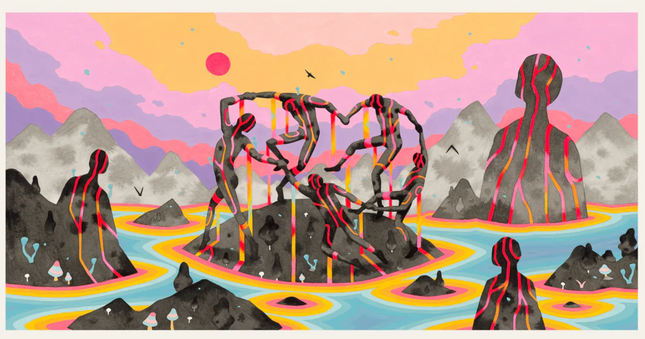
Religion
-

Ron English- POPaganda Last Supper in South Park Giclee Print by Ron English- POPaganda
Last Supper in South Park Artwork Giclee Limited Edition Print on Hahnemühle Photo Rag Pearl Paper by Pop Culture Graffiti Artist Ron English- POPaganda. South Park Studios proudly presents this museum quality fine-art reproduction of "Last Supper in South Park" by Ron English- POPaganda. Printed with Epson Pigmented inks on Hahnemühle Photo Rag Pearl paper, this unframed collector's piece is hand-signed and individually numbered by the artist. 150 prints in the edition. The creators of South Park and Ron English- POPaganda selected 15 artists to pay tribute to the 15th season of South Park at an art show that opens on March 28th at Opera Gallery in New York City.
$835.00
-

Derek Hess Presence Serigraph Print by Derek Hess
Presence Limited Edition Hand Pulled 4-Color Serigraph Print on Fine Art Paper by Derek Hess Graffiti Street Artist Modern Pop Art. "This piece is about a “presence”, higher power, greater conscience, god, or whatever you believe it to be. The words are “presence” written in many different languages to illustrate the universal presence. No one religion has a copyright on angels, they all basically come from the same source.The white of the wings and hair are the white of the paper." - Derek Hess
$352.00
-

Graham Yarrington Mourning Dance Archival Print by Graham Yarrington
Mourning Dance Archival Print by Graham Yarrington Limited Edition on Cotton Fine Art Paper, Pop Graffiti Street Artist Modern Artwork. 2023 Signed & Numbered Print Limited Edition of 30 Artwork Size 30x24 Archival Pigment Fine Art Mourning Dance by Graham Yarrington: Monumental Silence in Street Pop Art & Graffiti Artwork Mourning Dance is a 2023 signed and numbered archival pigment print by Brooklyn-based artist Graham Yarrington. Issued in a limited edition of 30, this 30 x 24 inch artwork on cotton fine art paper captures a surreal narrative rendered through the expressive language of modern Street Pop Art & Graffiti Artwork. Known for his dreamlike compositions and distinctive use of pastel psychedelia fused with monochrome landscapes, Yarrington constructs an image that feels both ancient and otherworldly, rooted in a spiritual landscape of memory, loss, and transcendence. A Ritual of Loss Frozen in Motion At the heart of Mourning Dance is a mountain-top tableau where elongated, molten-black humanoid figures form a delicate chain, caught mid-dance in a slow-motion spiral of grief and connection. These forms, marked by flowing neon lines of red, pink, and orange, appear to be bleeding energy into the terrain around them. The dancers rise from the island as extensions of the volcanic ground itself, almost as if pulled upward by sorrow. Their choreographed movements evoke a ceremonial lament, referencing the timeless role of dance as a communal expression of mourning. Encircling them is a dreamlike river glowing with concentric rings of color, turning the entire composition into a mythic memoryscape where geology, grief, and human spirit converge. A Psychedelic Vision of Time and Transformation The mountainous background, awash in hues of soft lavender and muted gray, is framed by a radiant sky of coral, orange, and tangerine tones with a distant magenta sun. These visual elements transport the viewer to a liminal realm that feels suspended outside of ordinary time. Mushrooms dotting the volcanic ridges suggest regeneration and hallucinogenic awareness, hinting at cycles of decay and rebirth. The juxtaposition of somber figures and radiant palette encapsulates Yarrington’s stylistic strength—bridging the internal emotional experience with the cosmic and environmental. His landscapes are not merely settings but sentient, alive with emotional resonance. Graham Yarrington’s Place in Contemporary Visual Language Graham Yarrington has emerged as a rising name in the world of contemporary Street Pop Art & Graffiti Artwork through his visual language that fuses illustration, graphic storytelling, and psychedelic symbolism. His work finds kinship with pop surrealism and abstracted street art, while distinctly pulling from ritualistic themes, mythology, and esoteric landscapes. Mourning Dance exemplifies this synthesis. It is meditative but monumental, quiet yet electric, full of mournful energy and vibrant life. Through subtle metaphors and striking design, Yarrington offers viewers a chance to participate in the ceremony—to observe, reflect, and emotionally connect to the cycles of human loss and resilience across time and nature.
$266.00




